Regions at a Glance
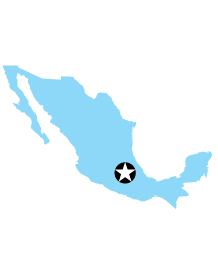
Mexico City
Museums Galore
You name it, Mexico City probably has a museum for it: from avant-garde art to pre-Hispanic artifacts and antique toys. Don’t miss the world-class Museo Nacional de Antropología and Frida Kahlo’s famed blue house.
Enter the Night
Mexico City is the country’s party capital, where old-world cantinas moonlight as hip bars or queer cabaret spaces. Learn salsa in a plaza by day, sip top mezcal on an exclusive rooftop bar at sundown, then let loose on the dance floor of a megaclub until the wee hours.
Culinary Melting Pot
The capital has fabulous eateries of many kinds and regional Mexican cuisine gets top billing. Everyone here seems to have an opinion on where you can find, say, the best Guerrero-style pozole (a hearty hominy, meat and veg soup) or the tastiest Yucatecan cochinita pibil (slow-roasted marinated pork).
Regions at a Glance
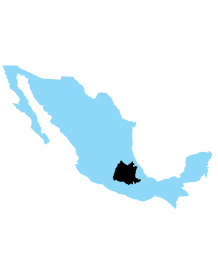
Around Mexico City
Ancient Architecture
Some of Mexico’s most awe-inspiring ruins stand within a few hours’ drive of the capital. Teotihuacán, with its stunning Pyramids of the Sun and Moon, is the most famous, but fascinating sites such as Cacaxtla, Xochitécatl, Xochicalco and Cantona can be explored in virtual solitude.
Pueblos Mágicos
With their leafy plazas, traditional crafts and gorgeous colonial edifices, remarkably well-preserved ‘magical towns’ such as Cuetzalan, Real del Monte, Malinalco and Valle de Bravo provide a perfect escape from the thick air and crowds of the capital.
Regional Specialties
An incredible variety of indigenous ingredients and imported culinary influences combine in complex regional cuisines. Many towns have their own specialty, such as the pasties from the mining villages above Pachuca, or Puebla’s famed mole poblano.
Regions at a Glance
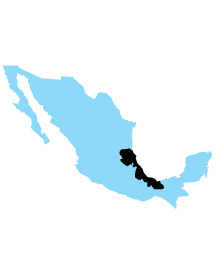
Veracruz
Ancient Cultures
Several distinct pre-Hispanic cultures graced Mexico’s Gulf coast, and all have left a weighty legacy. Examine the Classic Veracruz ruins of El Tajín with its curious niched pyramid and the magnificence of Totonac Zempoala, and see the genius of ancient sculptors in Xalapa’s Museo de Antropología.
Fish, Glorious Fish
Thanks to the state’s 690km-long coastline, fish (and seafood) headlines most menus, in particular the spicy mélange known as huachinango a la veracruzana. Lining up behind it are the distinctive moles of Xico and the gourmet coffee of Coatepec.
River Deep, Mountain High
Mexico’s highest mountain, Volcán Orizaba, towers over central Veracruz and presents the country’s toughest trekking challenge. Down in the valleys, Río Antigua and Río Filobobos attract whitewater daredevils.
Regions at a Glance
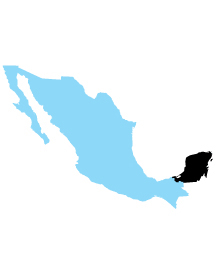
Yucatán Peninsula
A Day at the Beach
Finding the right beach for you is simply a matter of hopping on a bus (or boat). From the debauchery of Cancún to lonely Costa Maya beaches such as Xcalak, the bleach-white sands and beautiful warm waters mustn’t be missed.
Into the Blue
With hundreds of kilometers of Caribbean coastline and the world’s second-largest barrier reef, the region is a diver’s and snorkeler’s dream. Banco Chinchorro and Isla Cozumel are the superstars and Cancún’s underwater sculpture garden provides another unique experience.
Oldies but Goodies
From world-famous Chichén Itzá to virtually unheard-of sites such as Ek’ Balam, the Yucatán is dotted with spectacular pyramids and temples. Many have a resonating atmosphere that even the loudest tour groups can’t diminish.
Regions at a Glance
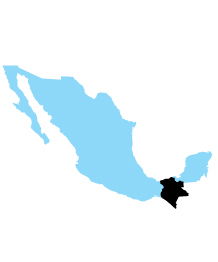
Chiapas & Tabasco
Birds & Beasts
Nesting turtles, roaring monkeys and flashes of rainbow plumage are standard fare in the jungles and on the misty mountains and sandy beaches of this biodiverse region that’s full of rare and endangered wildlife.
In Motion
Whether you’re rappelling into a jungle sinkhole, bouncing over a stretch of white water in a rubber raft, or climbing a 4000m volcano, Chiapas has multiple ways to raise your adrenaline levels.
Temples & Tradition
The world of the Maya lives on everywhere you turn here, from the preserved stone temples of Classic Maya civilization to the persistence of dramatic pre-Hispanic religious rituals and the intricate hand-woven textiles and clothing still worn by many.
Regions at a Glance
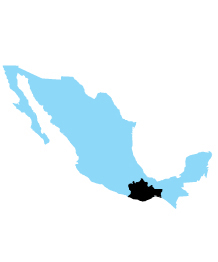
Oaxaca
Coast of Dreams
With 550km of sandy Pacific strands and wildlife-rich lagoons, Oaxaca’s coastline has it all – the pumping surf of Puerto Escondido, the blissed-out traveler scene of Zipolite and Mazunte, and the resort attractions of low-key Bahías de Huatulco.
The Great Outdoors
Hike through the Sierra Norte’s mountain forests, surf the Pacific swells, raft rivers from the hills to the sea, snorkel or dive the beautiful Huatulco bays, and spot whales, dolphins and turtles off the Pacific coast.
Traditional & Cutting Edge
Oaxaca state is a cultural hub in so many senses, from Oaxaca City’s vibrant arts scene to the distinctive Oaxacan cuisine and endlessly inventive handicrafts of the state’s indigenous peoples. It all wraps up in a unique and proud Oaxacan regional identity.
Regions at a Glance
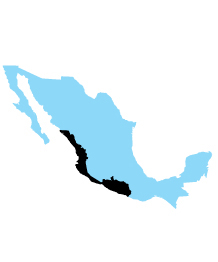
Central Pacific Coast
Natural Highs
Kayak across a lagoon at dawn, ride horses into the Sierra Madre, swim among flitting butterflies in a boulder-strewn river, watch pelicans and whales parade through the waves, or scan the nighttime sands for nesting mama turtles.
Seafood Heaven
Sidle up to a beachside table at sunset, grab a cold beer and a fresh-cut lime and settle into a plateful of pescado zarandeado (grilled fish), tiritas (citrus-and-chili-marinated raw-fish slivers) or shrimp and red snapper cooked a dozen different ways.
Surf & Sand
Conjure up the beach of your dreams and you’ll find it here, whether wiggling your toes in the sand with margarita in hand, or chasing perfect waves along an endless ultramarine horizon.
Regions at a Glance
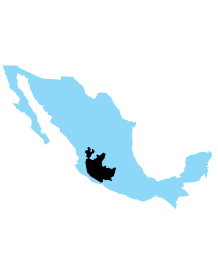
Western Central Highlands
Art & Crafts
The highlands heave with indigenous culture, most notably that of the thriving Purépecha people, whose arts and crafts are sold around Pátzcuaro and Uruapan. You’ll find superb art galleries and shopping in Guadalajara and its suburbs of Tlaquepaque and Tonalá.
Culinary Feast
When Unesco listed Mexican cuisine as Intangible Cultural Heritage in 2010, it made special mention of Michoacán, whose edibles are often termed the ‘soul food’ of Mexico. Throw in birria (a spicy goat or lamb stew) from Jalisco washed down with local tequila, and you’ve got a veritable feast.
Volcanic Drama
Tiny Colima state packs a scenic punch with its dramatic twin volcanoes. For equally glorious scenery don’t miss the modern marvel of Volcán Paricutín in Michoacán.
Regions at a Glance
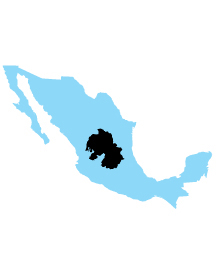
Northern Central Highlands
Historic & Contemporary
Home to fascinating indigenous cultures and most of the silver that brought opulence to Mexico’s colonial grandees, this region was also the birthplace of Mexican independence. Excellent museums highlight everything from historical heroes to contemporary art.
Natural Playground
An emerging adventure playground, this region offers the chance to rappel into giant sinkholes and snorkel inland lakes in the Huasteca Potosina, ride into deserts around Real de Catorce and search for macaws in Sierra Gorda caves.
Pedestrian Paradise
Cobblestone streets lined by gorgeous colonial stone mansions and churches make for fascinating exploration on foot. Towns and cities here are made for getting lost in – up narrow callejones (alleys) or down steep steps. You’ll eventually end up on a pretty, laurel-tree-filled plaza.
Regions at a Glance
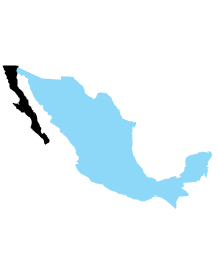
Baja California
Majestic Mountains, Tropical Paradise
Few places in the world have deserts just steps away from turquoise lagoons and high, pine-forested mountains just a couple of hours’ drive inland. At every corner there are vistas that seem pulled from the pages of a vacation calendar.
Ruta del Vino
The Valle de Guadalupe is producing the best wines in Mexico and this ‘Napa Sur’ is garnering international acclaim. Its Wine Route makes for a great day (or two) out.
Surfing & Diving
Baja is a paradise for surfers of all levels, with beach, point and reef breaks up and down the Pacific coastline. Divers can do a two-tank dive in the Pacific and be in the natural aquarium of the Sea of Cortez in time for a night dive.
Regions at a Glance
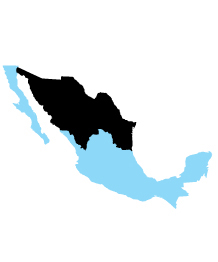
Copper Canyon & Northern Mexico
Charming Continuity
The gorgeous old towns of Álamos, with its wonderful hotels and restaurants, Durango, with its expansive plazas and museum offerings, and Parras with its long-standing viticulture, seduce visitors with the pull of bygone centuries.
From Sarapes to Steel
Monterrey’s spectacular Parque Fundidora is replete with cultural interest, particularly the Horno3 museum devoted to steelmaking. In Saltillo you’ll find museums focusing on the desert environment, sarape textiles and birdlife, while Durango’s and Chihuahua’s impressive offerings include museums dedicated to Pancho Villa.
Great Outdoors
The north is all about topographical overload. An idyllic coastline, vast deserts, dramatic canyons and climates from alpine to subtropical all contribute to a wealth of wildlife and tantalizing hiking and biking.